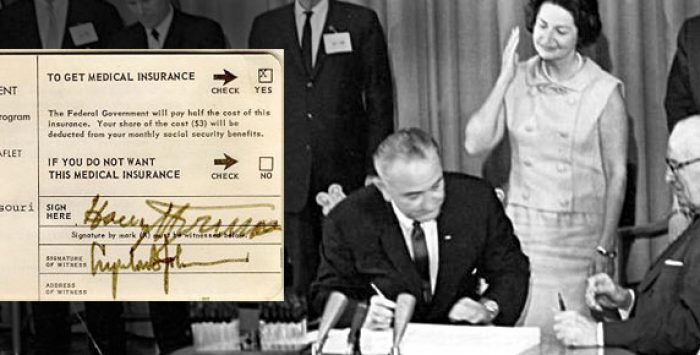Topics covered in this article
Medicare’s origins and growth
Medicare is the federal health insurance program created in 1965 to provide health coverage for Americans aged 65 and older.
The program – administered by the Centers for Medicare and Medicaid Services – was expanded in 1972 to cover people younger than 65 who have permanent disabilities, including those diagnosed with end-stage renal disease (ESRD). And in 2001, Congress added amyotrophic lateral sclerosis (ALS) as a diagnosis that makes a person eligible for Medicare prior to age 65. Approximately 12% of the Medicare population – almost 8 million beneficiaries – are under 65.
Read: A brief history of Medicare in America
How is Medicare funded?
Each part of Medicare is funded differently (see Figure 7 in this resource).
- Part A is funded primarily by payroll taxes, which end up in the Hospital Insurance Trust Fund.
- Part B revenue comes from general revenues and the premiums paid by Medicare beneficiaries.
- Part C (Medicare Advantage) is also paid for by general revenues and beneficiary premiums.
- Part D prescription drug coverage is funded by general revenues, premiums, and state payments.
Who is eligible for Medicare?
Generally speaking, you are eligible for Medicare if one of the following applies:
In order to get Medicare Part A with no premium, you also need to have paid into the Medicare system. This means that you or your spouse (or a parent, if you’re enrolling as a disabled child) must have worked for at least ten years prior to enrolling in Medicare. If not, you’re still eligible, but will have to pay a premium for Medicare Part A.
Find out when you will be eligible for Medicare and how to enroll.
How do Americans receive Medicare coverage?
The Medicare program is comprised of four main parts:
- Medicare Part A – often referred to as “hospital insurance” – is devoted to inpatient care, covering the costs of inpatient hospital stays, skilled nursing facility stays (if they meet specific criteria), home health care, and hospice care.
- Medicare Part B – often called “medical insurance” – covers outpatient expenses, including physician and nursing fees, as well as a range of services (such as x-rays, diagnostic tests, and renal dialysis) and some equipment. Part B also covers hospital stays if the patient is kept under observation rather than being admitted as an inpatient.
- Medicare Advantage (Part C) – allows Medicare beneficiaries to receive Medicare-covered benefits through private health plans which may also include extra benefits such as prescription drug coverage (ie, integrated Part D coverage). In exchange for the benefits, coverage will generally be limited to a network of providers (as opposed to the nationwide access to providers that Original Medicare beneficiaries have).
- Medicare Part D – prescription drug coverage – provides price breaks on prescription drugs for more than 50 million Americans who enroll in Part D plans designed and administered by private health insurance companies (more than 23 million people have stand-alone Part D plans, and nearly 27 million have Part D coverage integrated with a Medicare Advantage plan).
- Medicare supplement (Medigap) – is supplemental coverage purchased by Original Medicare beneficiaries to cover out-of-pocket expenses (for Medicare-covered services) they would otherwise have to pay themselves. Ten different standardized plans are offered in most states – lettered A through N – providing different combinations of money-saving benefits (note that plans C and F, both of which cover the Part B deductible in full, are not available to beneficiaries who have become eligible for Medicare after the end of 2019. The most comprehensive Medigap alternative for newly eligible enrollees is now Plan G, which is the same as Plan F except for the coverage of the Part B deductible.)







